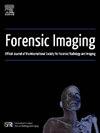ISFRI Guidelines Working Group: Best practice standards for non-contrast postmortem computed tomography (PMCT) of overdose
IF 1
Q4 RADIOLOGY, NUCLEAR MEDICINE & MEDICAL IMAGING
引用次数: 0
Abstract
Postmortem computed tomography (PMCT) has emerged as a valuable tool in forensic investigations, supporting the investigation of suspected overdoses. While not specific, Cerebral edema, pulmonary edema, and urinary bladder distention (the overdose triad) can suggest overdose in unsuspected cases. Furthermore, a high-density basal layer in the stomach may indicate intentional therapeutic medical overdose. Challenges include short agonal intervals and decomposition changes. Confirmatory blood toxicology is necessary. Dual-energy computed tomography (DECT) can play a role in differentiation of material contributing to dense basal layers and body packing scenarios. PMCT serves as a valuable complement to autopsy findings, aiding in the assessment of internal pathology while also offering a non-invasive alternative in specific forensic contexts where autopsy may not be performed.
ISFRI指南工作组:过量非对比死后计算机断层扫描(PMCT)的最佳实践标准
尸体计算机断层扫描(PMCT)已成为法医调查的一种有价值的工具,支持对疑似过量用药的调查。脑水肿、肺水肿和膀胱膨胀(“过量三联征”)虽然没有特异性,但可能提示在未被怀疑的病例中过量用药。此外,胃中高密度的基底层可能表明有意的治疗性药物过量。挑战包括短时间间隔和分解变化。确认血液毒理学是必要的。双能计算机断层扫描(DECT)可以在导致致密基底层和身体堆积的材料分化中发挥作用。PMCT是对尸检结果的宝贵补充,有助于评估内部病理,同时也为无法进行尸检的特定法医环境提供非侵入性替代方案。
本文章由计算机程序翻译,如有差异,请以英文原文为准。
求助全文
约1分钟内获得全文
求助全文
来源期刊

Forensic Imaging
RADIOLOGY, NUCLEAR MEDICINE & MEDICAL IMAGING-
CiteScore
2.20
自引率
27.30%
发文量
39
 求助内容:
求助内容: 应助结果提醒方式:
应助结果提醒方式:


